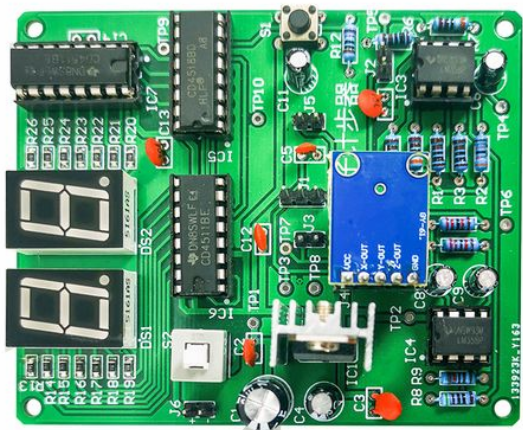Tip 1:
An important way to reduce EMI is to design the PCB ground plane. The first step is to make the grounding area as large as possible in the total area of the PCB circuit board, so that emission, crosstalk and noise can be reduced. Special care must be taken when connecting each component to the ground point or ground plane. If this is not done, the neutralizing effect of a reliable ground plane will not be fully utilized.
A particularly complex PCB design has several stable voltages. Ideally, each reference voltage has its own corresponding ground plane. However, if the ground layer is too much, it will increase the manufacturing cost of the PCB and make the price too high. The compromise is to use ground planes in three to five different positions, and each ground plane can contain multiple ground parts. This not only controls the manufacturing cost of the circuit board, but also reduces EMI and EMC.
The time for the signal to return to the ground is also very important. The time for the signal to and from the signal source must be equal, otherwise it will produce an antenna-like phenomenon, making the radiated energy a part of EMI. Similarly, the traces that transmit current to/from the signal source should be as short as possible. If the length of the source path and the return path are not equal, ground bounce will occur, which will also generate EMI.

Tip 2:
Due to the difference in EMI, a good EMC design rule is to separate analog and digital circuits. The amperage of the analog circuit is higher or the current is higher, so it should be far away from high-speed wiring or switching signals. If possible, ground signals should be used to protect them. On a multilayer PCB, analog traces should be routed on one ground plane, and switch traces or high-speed traces should be on another ground plane. Therefore, the signals of different characteristics are separated.
In digital circuit design, experienced PCB layout and design engineers will pay special attention to high-speed signals and clocks. At high speeds, signals and clocks should be as short as possible and adjacent to the ground plane, because as mentioned earlier, the ground plane can keep crosstalk, noise, and radiation within a controllable range.
The digital signal should also be far away from the power plane. If the distance is very close, it will produce noise or induction, thereby weakening the signal.
Tip 3:
The wiring is particularly important to ensure the normal flow of current. If the current comes from an oscillator or other similar device, it is especially important to keep the current separate from the ground plane, or not to let the current run parallel to another trace. Two parallel high-speed signals will generate EMC and EMI, especially crosstalk. The resistance path must be the shortest, and the return current path must be as short as possible. The length of the return path trace should be the same as the length of the send trace.
For EMI, one is called "infringed wiring" and the other is "victimized wiring". The coupling of inductance and capacitance will affect the "victimized" trace due to the presence of electromagnetic fields, thereby generating forward and reverse currents on the "victimized trace". In this case, ripples will be generated in a stable environment where the transmission length and reception length of the signal are almost equal.
With the continuous emergence of new materials and new components, PCB designers must continue to deal with electromagnetic compatibility and interference issues.
Tip 4:
Decoupling capacitors can reduce the adverse effects of crosstalk. They should be located between the power supply pin and the ground pin of the device to ensure low AC impedance and reduce noise and crosstalk. In order to achieve low impedance over a wide frequency range, multiple decoupling capacitors should be used.
Tip 5:
In order to reduce EMI, avoid wiring, vias and other components forming a 90° angle, because right angles will generate radiation. At this corner, the capacitance will increase, and the characteristic impedance will also change, leading to reflections and then EMI. To avoid 90° angles, traces should be routed to the corners at least at two 45° angles.
Tip 6:
In almost all PCB layouts, vias must be used to provide conductive connections between different layers. PCB layout engineers need to be especially careful because vias will generate inductance and capacitance. In some cases, they will also produce reflection, because the characteristic impedance will change when the via is made in the trace.
Tip 7:
Cables carrying digital circuits and analog currents will generate parasitic capacitance and inductance, causing many EMC-related problems. If a twisted pair cable is used, the coupling level will be kept low and the generated magnetic field will be eliminated. For high-frequency signals, a shielded cable must be used, and the front and back of the cable must be grounded to eliminate EMI interference.